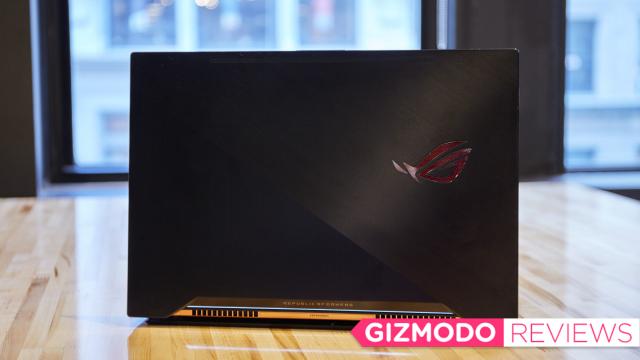All images: Alex Cranz/Gizmodo
A couple of weeks ago I was braving the big crowds of E3 to meet with the Nvidia team, and while I was ostensibly there to check out Destiny 2 on a PC, what I really wanted to know was what the hell Max-Q Design was. Nvidia announced its new design philosophy back in May, and I’d spent the intervening weeks unable to shake the sense that this was all just a great big marketing ploy — an acknowledgement that Nvidia’s most powerful GPUs often end up in great big computing monstrosities.
[referenced url=”https://gizmodo.com.au/2017/05/what-you-need-to-know-about-max-q-nvidias-plan-to-make-gaming-laptops-that-arent-monstrosities/” thumb=”https://i.kinja-img.com/gawker-media/image/upload/t_ku-large/z2au74fnmzdxwwu9uxxr.jpg” title=”What You Need To Know About Max-Q, Nvidia’s Plan To Make Gaming Laptops That Aren’t Monstrosities” excerpt=”When you think gaming and laptops, images of massive, dictionary-thick machines come to mind. Notebook computers purpose-built for PC gaming are only barely portable, but Nvidia wants to change that with a new approach to hardware and software design for laptops called Max-Q, which lets mobile gamers have their cake and easily carry it too.”]
At E3, the men of Nvidia attempted to disabuse me of that notion. They pointed specifically to the new Asus ROG Zephyrus as an example of what could happen when a collaboration was motivated by the Max-Q Design philosophy. After testing the Zephyrus for a week, I’m returning to the question of whether Max-Q Design is a gimmick meant to move laptops or a shift towards a new laptop status quo. The truth, it turns out, lies somewhere in the middle; this is an extraordinary laptop that manages to be so thin and powerful that it boggles the mind a little — but it’s also got a very serious flaw.
With those hard titanium Powerbook G4-like edges, the Zephyrus calls to mind its boxy forbearers, yet it’s so much thinner than any laptop of its power-level that’s come before. At 3cm, it’s actually only a little thicker than the much less powerful .61-inch thick 38cm MacBook Pro, and a whole lot thinner than a cheap 38cm gaming laptop like the 3cm thick Dell Inspiron 7000. It’s also more than half the thickness of Asus’s last gaming laptop with a Kaby Lake processor and Nvidia 1080 GPU. The average thickness of previous Asus gaming laptops with similar specs? 3cm.
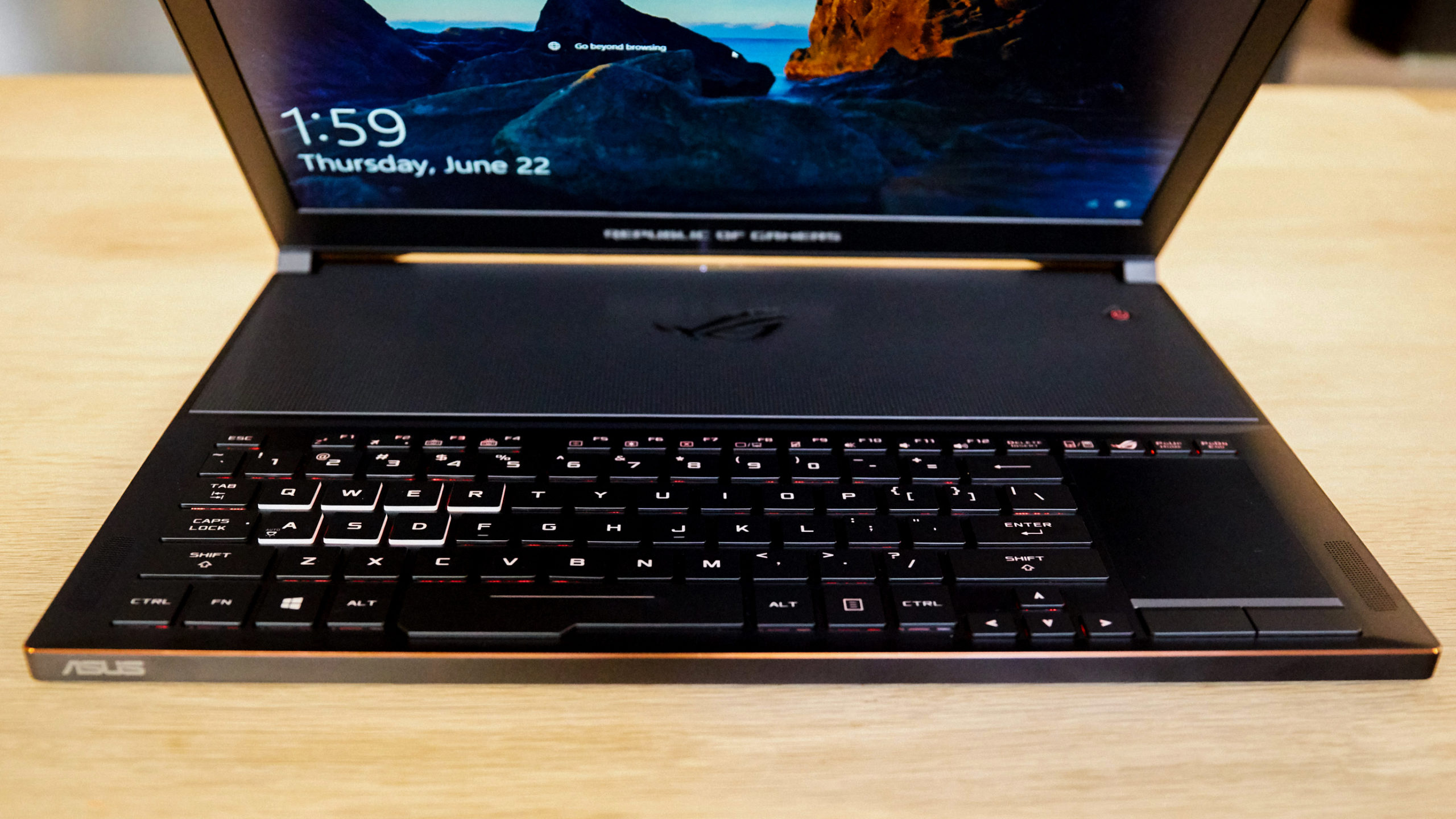
When will gaming laptop makers understand this is not a comfortable layout?
Beyond that remarkable thinness, at a glance, nothing seems to have changed between the Zephyrus and earlier gaming laptops from companies like Asus, MSI, and Acer. There’s the black brushed aluminium finish and a keyboard lit in garish colours. The Zephyrus adheres to the new fad of removing the palm rest, bringing the keyboard down to the front edge of the chassis and adding a big ugly space between the keyboard and the screen. It makes for an uncomfortable gaming experience, particularly if you try to use the touch pad, which is shunted off to the right.
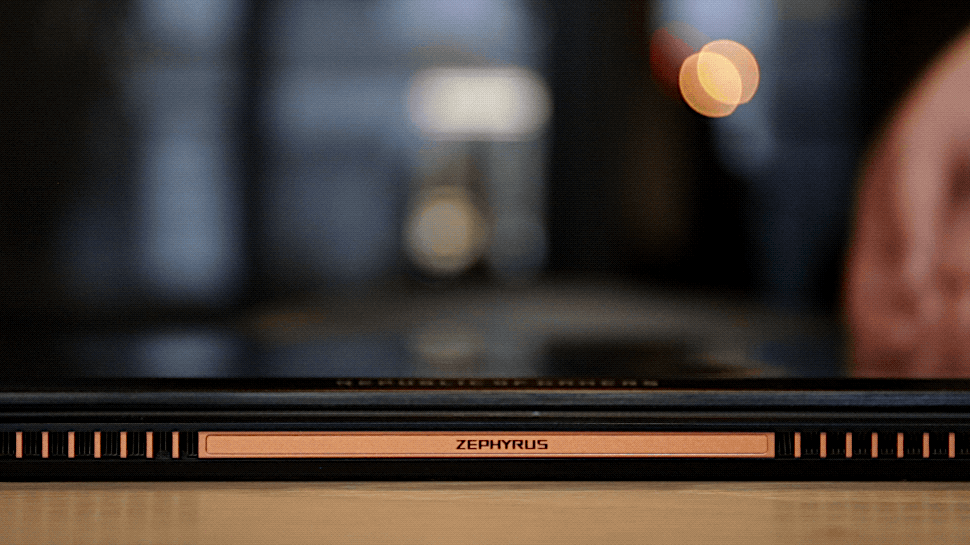
You will spend a lot of time opening and shutting it and expecting the hinge to catch, but it will open smoothly every time.
Then you open the Zephyrus up and the bottom panel of the device stays on the table, while the rest of the body smoothly separates, creating a big gap intended for cooling the internals. This in particular makes the Zephyrus feel positively space age: When you first get your hands on this machine, you will definitely spend twenty minutes at the table, opening and closing the device and watching that neat separation.
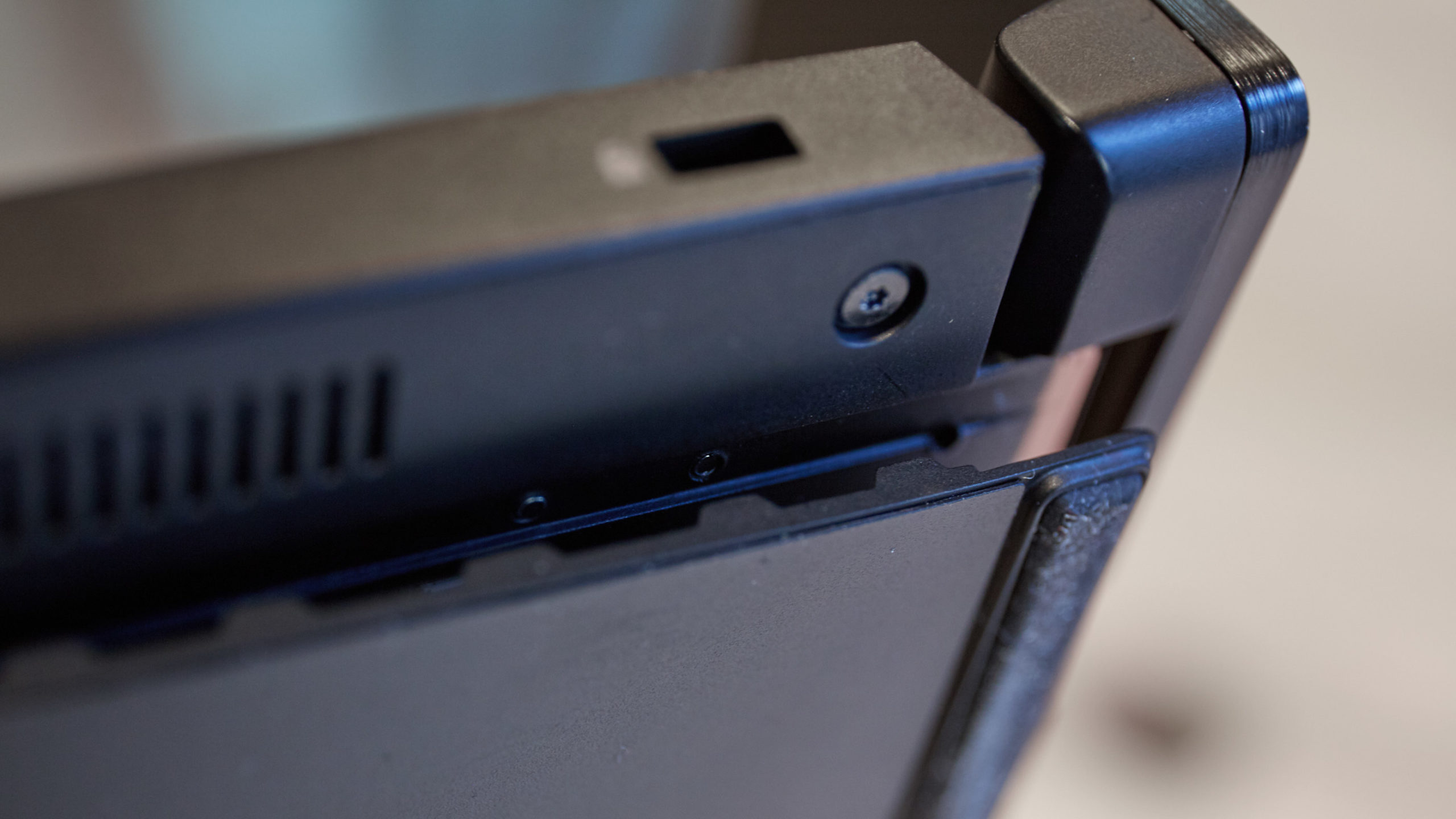
A close up on that separation.
The vent, which is a nightmare for anyone with a toddler who likes to stick things in other thing, supposedly improves airflow to the Nvidia 1080 GPU packed inside. While I can’t confirm that, I can confirm that it makes the bottom of the Zephyrus much cooler. I noticed it as soon as I plopped the laptop on my legs and tried, again, to finish Mass Effect: Andromeda. The device got warm, but never so uncomfortably hot that I had to take it off my legs for fear of causing permanent damage to my thigh meats. This was confirmed when I ran the Civilizations VI Graphics benchmark, with identical graphics settings, on it and my 2016 33cm MacBook Pro. The Zephyrus, despite having a much more powerful graphics card and CPU, ran five degrees cooler, hitting just 93 degrees Fahrenheit on the bottom of the case.

This thing runs cooler than expected.
Between how thin this machine is and how cool it runs versus another laptop processing a similar workload, I was starting to get the sense that there might be something to the hyped Max-Q Design. Staring at my thermal performance results, I was kind of stunned. Perhaps Max-Q Design wasn’t just an exercise in marketing. If other laptop makers start adopting Nvidia’s design ethos, we could see a whole slew of incredibly powerful machines, with discrete graphics that are less thick than a deck of cards. That would be welcome after nearly a decade of super thick gaming laptops.
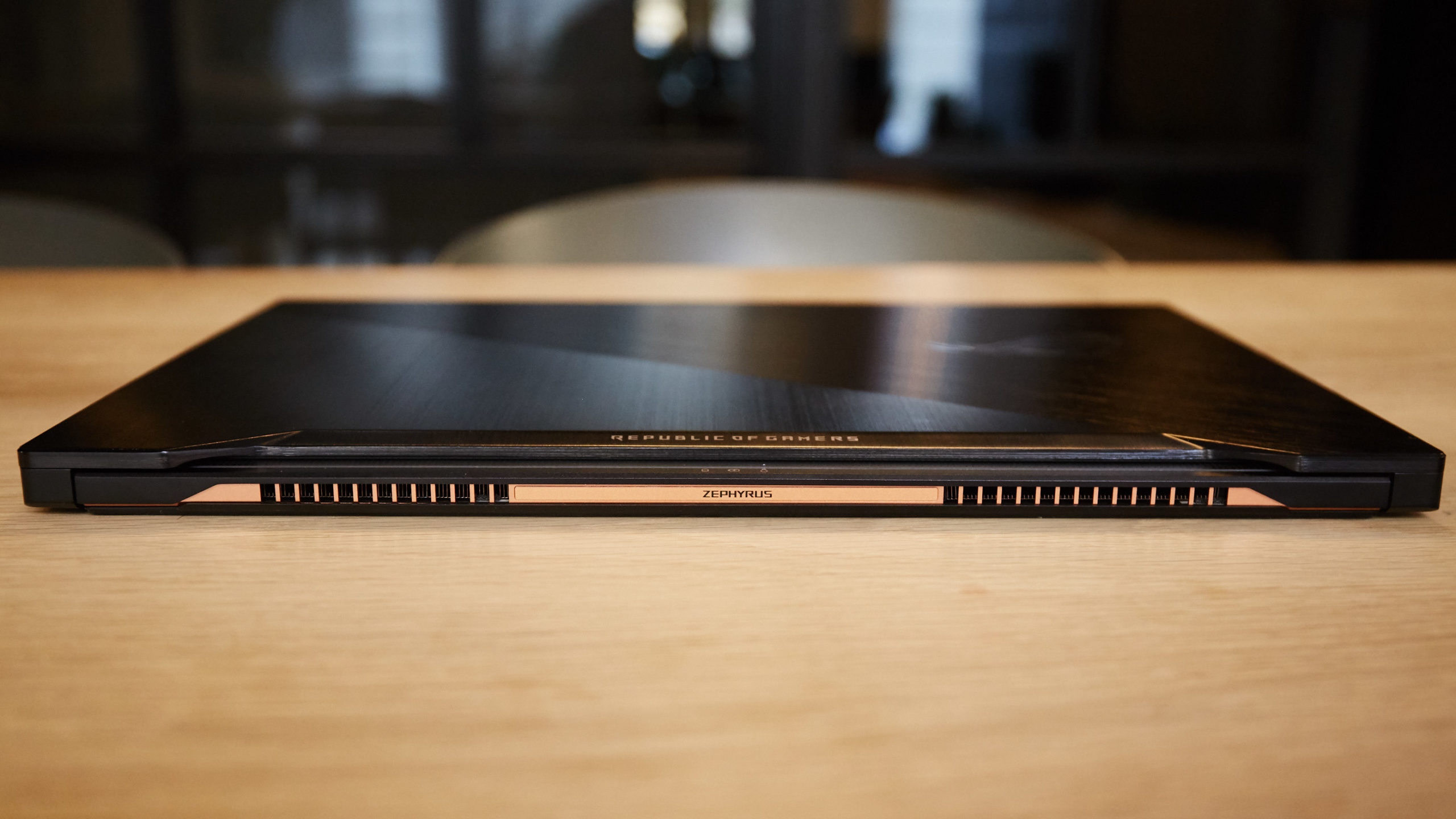
The flaw has nothing to do with outward appearances — this is one good looking gaming notebook.
But, as evidenced by the success of most of the current monstrosities labelled as gaming laptops, gamers don’t really care about how gigantic a gaming laptop looks. What they care about is how it runs. The Zephyrus is a pricey machine, retailing for $2,699 to $3,600, and on paper, it’s packed with power. That big price tag gets you a Nvidia 1080 graphics card, an Intel i7-7700HQ CPU, 16GB of RAM, a 256GB M.2 SSD hard drive, and a 41cm display with a 120Hz refresh rate. You could build something similar (excluding laptop chassis) for half the price, or, if you absolutely needed a laptop, you could pick up a 43cm one with nearly identical specs from Asus or MSI. Both would also be about twice as thick.

The keyboard is a nod to gamer design, and I kind of wish they’d gone with something a little more modern and a little less “gamer-chic.”
Nvidia GPUs running on Max-Q devices are designed to run at slower speeds, sipping less power and reducing performance so they can maintain their thinness without become scorching hot. The question was how much performance will you lose? If a $3,600 device like the Zephyrus only runs as well or a little better than a $1,040 device like the Dell Inspiron 7000, then its price tag and size start to feel a lot less worth it. What’s the point of spending all that cash if you’re ultimately crippling performance?
The Zephyrus, to my delighted surprise, ran really damn fast. While I didn’t have the right laptop on hand to compare the device to performance-wise, I do happen to have a desktop with an Intel i7-7700k CPU, Nvidia 1080 desktop GPU, and 256GB m.2 SSD. So I pitted the two (and a $US900 ($1,178) Dell Inspiron 7000) against one another.
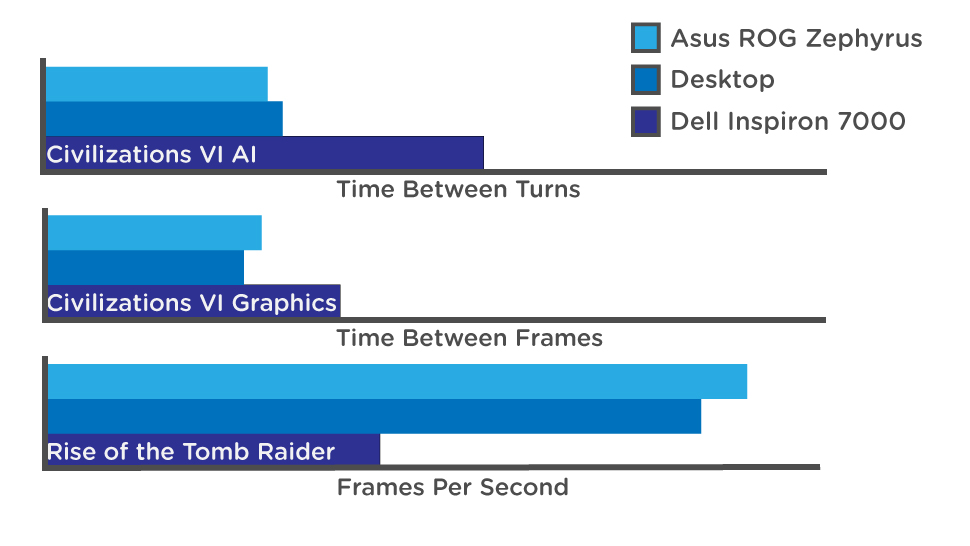
Not only is this thing much faster than a laptop for a third of the price (it had better be), it’s also every bit as fast as a desktop.
Unfortunately, there’s a catch, and if you’re eyeing a gaming laptop for extended sessions on a plane, bus, or in any other venue sans power ports, then it’s gonna be a doozy. In laptop design there is always a trade off when it comes to power, performance, and size. If you have a powerful laptop, it is either big enough to hold a giant battery, or thin and light enough you don’t mind tossing it on the couch as you hunt for a charger. A powerful laptop will always fail at one end or the other of this power management spectrum, and the Zephyrus, in its quest to be so incredibly slight, drops the ball when it comes to battery life.
I got just a little more than two hours of regular use on the thing. It’s consistent too: Whether I’m attempting to game or just browsing Twitter, my battery disappears very fast.
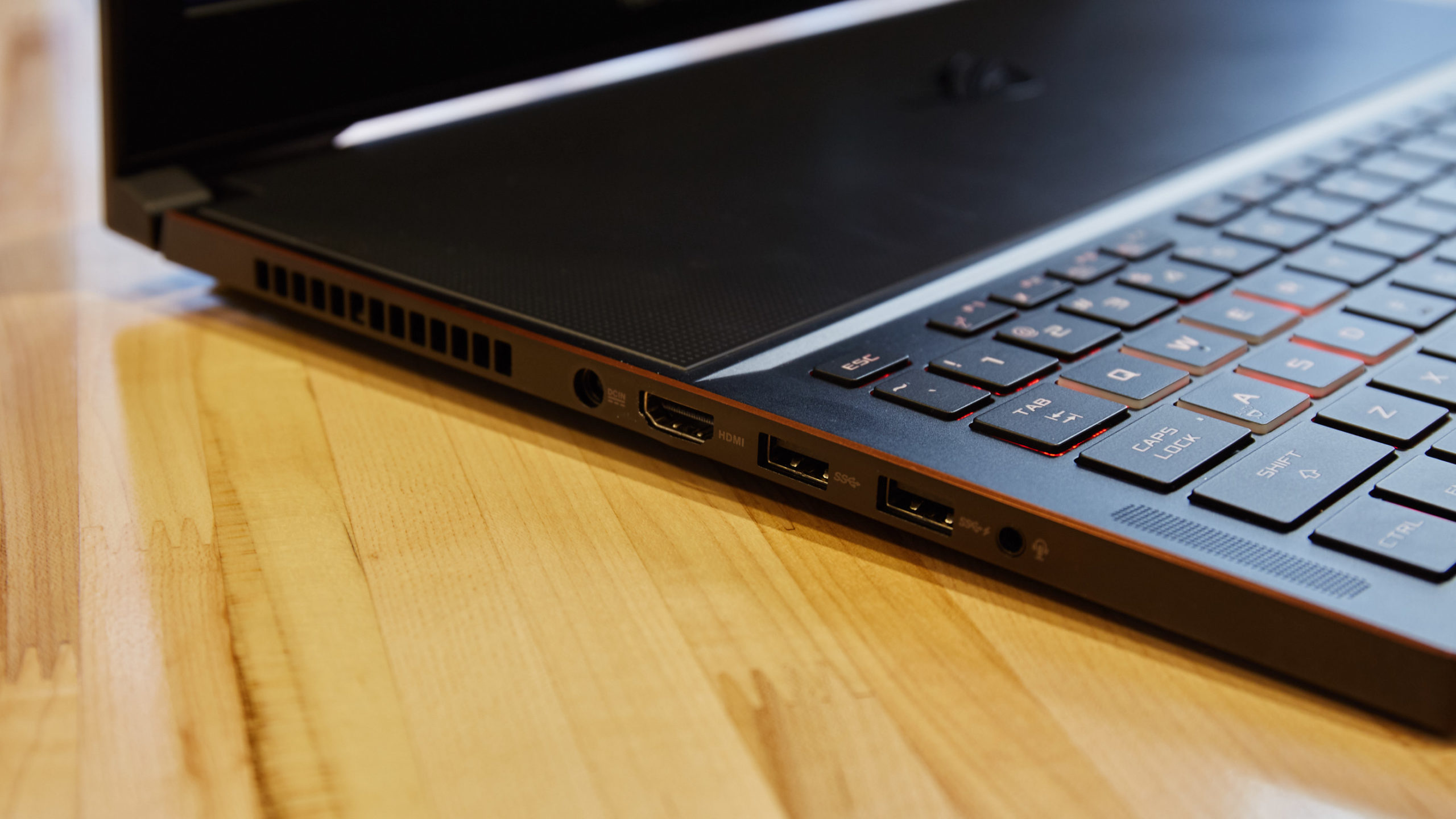
You get a lot of ports with the Asus ROG Zephyrus. Including an annoying proprietary one for charging (that’s it by the HDMI port).
For all the big cool engineering feats Nvidia and Asus have accomplished with the Zephyrus, the laptop still has a fatal flaw — though one endemic to all ultra powerful laptops. That $US9000 ($11,779) laptop from Acer, with the 53cm curved display and two Nvidia 1080 GPUs, had battery life nearly as abysmal and weighed four times as much! Nvidia, with Max-Q Design appears to have solved some of the biggest flaws of gaming laptops. It’s found a neat balance between power and physical design, and if it ever figures out how to defy the laws of physics and develops a battery that can handle all the juice a 1080 graphics card sucks down, then Max-Q Design might move completely out of the realm of marketing hype and set a gaming laptops onto a trend all our thighs and backpacks richly deserve.
Until that day, we’ve got the Asus ROG Zephyrus. It’s a $3,600 laptop that is, by all accounts, the most powerful laptop of its size ever made. If you need a gaming laptop that’s small, powerful, and cool in your lap, and you don’t mind carrying a power supply everywhere you go, then put this guy at the top of your list of potential buys. You’re going to be hard pressed to find another laptop this well crafted and this great at balancing power and size.
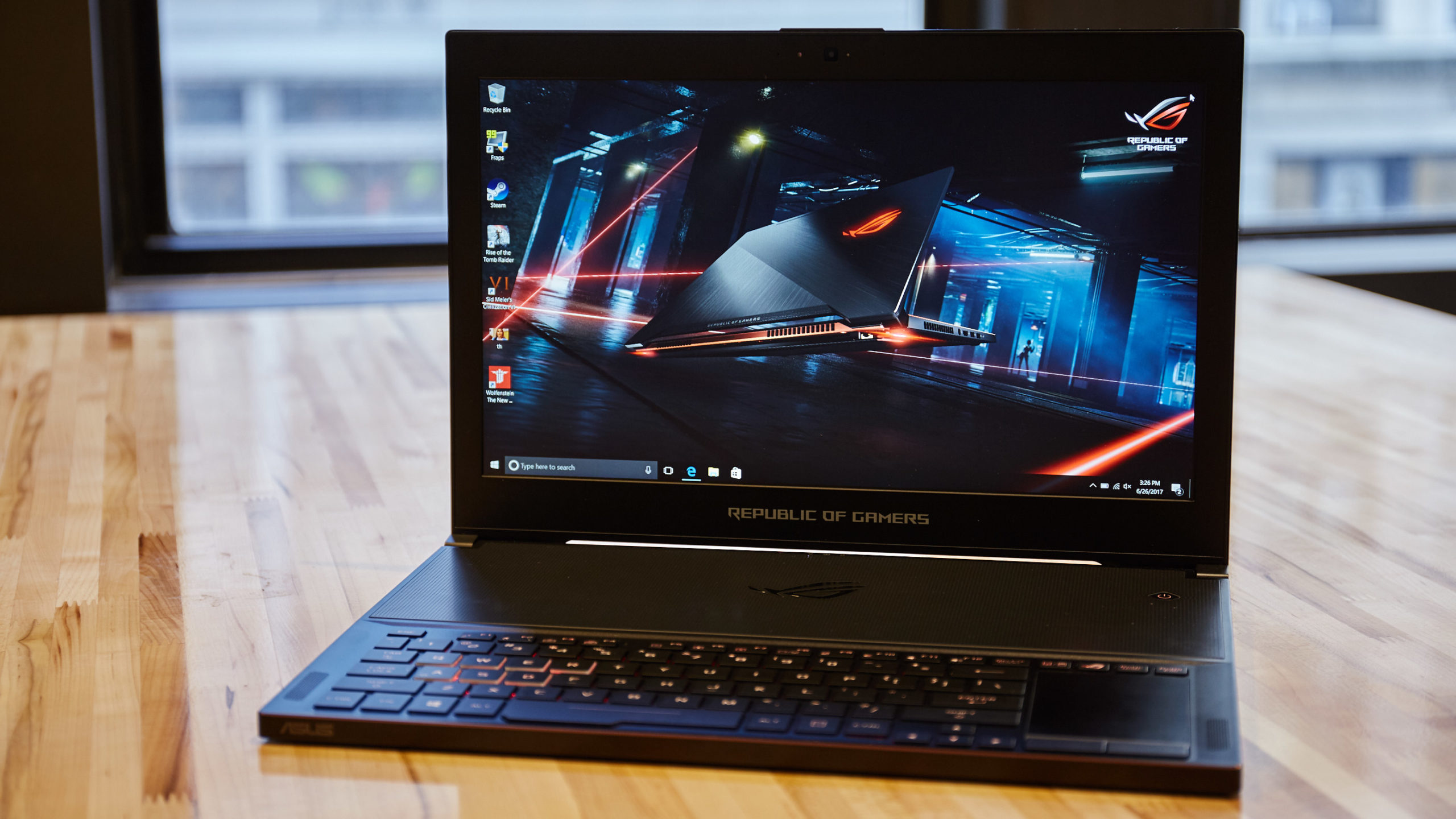
README
- That hinge is wickedly cool, but so help you if you have a toddler, because they will almost certainly cram things in there.
- It’s actually much more powerful than you’d think.
- The battery life is atrocious though.
- Nvidia’s marketing ploy, Max-Q Design, actually executes damn well. This could really be a thing.
- And I’d like to have a word with whoever decided touchpads were a good solution for controlling games. It is not.
